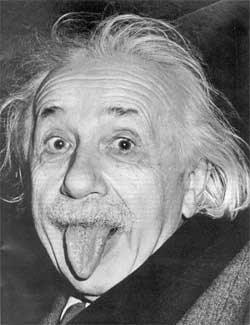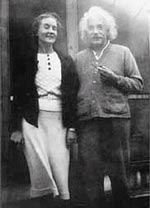When Margarita Konenkova was tasked by the KGB, she could never have guessed how her life would change upon meeting Albert Einstein. Indeed, Margarita’s life changed to such an extent that there was no turning back.
Margarita
“Margarita is so beautiful that I feel she must be the creation of some mysterious artist” – wrote her husband, the renowned Russian sculptor Sergei Konenkov, in his diary as he reminisced about their first encounter.
It is true that Margarita knew how to make an impression. After moving from the small town of Sarapul to Moscow, she stayed with the family of doctor Ivan Bunin while studying law. It was here that she met the young sculptor Sergei Konenkov. They fell in love and soon after married.
Margarita easily integrated into the capital’s lifestyle. Her marriage to Konenkov could be considered harmonious, but this did not prevent her from having romantic adventures with famous figures such as composer Sergei Rachmaninoff and tenor Feodor Chaliapin. Her husband was, of course, aware of everything. However, being not only a talented sculptor but also a wise man, he turned a blind eye to his young wife’s passions.
In 1923, the Konenkovs traveled to the United States to attend a Russian and Soviet art exhibition in New York. Initially, their trip was supposed to last just a few weeks, but due to unforeseen circumstances, they didn’t return to Russia for over 20 years.
In America, Margarita transformed completely. She was referred to by Americans as the “Lady Rodin of Russia.” In a short time, she fully embraced the lifestyle of American artists, donning luxurious dresses and expensive jewelry.
Their home became a kind of “noble salon” for New York artists. Konenkov personally crafted a “home bar” entirely out of carved wood, while Margarita always stood out at social gatherings. Much of this was thanks to her, as her husband frequently received commissions from some of the most influential figures in America. In 1935, the board of Princeton University commissioned Konenkov to sculpt a bust of scientist Albert Einstein.
Einstein
At that time, Einstein was 56 years old and had been married twice.
 He first married at the age of 20 to a Serbian woman four years his senior named Mileva Marić. Although they later had two children together, the relationship between the couple was rather cold. Mileva often grew jealous of Einstein because he was admired by many women.
He first married at the age of 20 to a Serbian woman four years his senior named Mileva Marić. Although they later had two children together, the relationship between the couple was rather cold. Mileva often grew jealous of Einstein because he was admired by many women.
Frequently, some wealthy socialite would send a car to take him out for the day. Moreover, Mileva believed that Einstein had sabotaged her scientific career, as she was a talented mathematician.
While Einstein had to take the entrance exam twice to be accepted to university, Mileva passed on her first attempt. These tensions escalated, and eventually, they parted ways.
However, Mileva had calculated everything with mathematical precision, and when they divorced, she stipulated that if Einstein won the Nobel Prize, he would only receive the fame while the monetary portion of the prize would go to her. Indeed, Einstein honored that commitment later on.
After parting ways with Mileva, Einstein began searching for a new partner, the first of whom was his cousin Elsa. Elsa was a beautiful but superficial woman who loved fine clothing and expensive jewelry.
Of course, she loved Einstein too, but that was tied to his glory. Einstein, on the other hand, was completely indifferent to a lavish lifestyle. At least, that was true until 1935, when he crossed the threshold of Soviet sculptor Konenkov’s home and met Margarita. At that time, Einstein was 56 years old and Margarita was 39.
Love
It is often said: “They met and immediately fell in love.” But for Einstein and Margarita, it was different: Their love developed slowly and gradually, deepening to a point where it could not be stopped.
At that time, Einstein was living in Princeton. Konenkov visited only once, after which he sculpted the bust of Einstein from memory. Margarita, however, began visiting Princeton more frequently.
After Elsa passed away in 1936, Margarita took her place beside Einstein. To ensure Margarita could legally stay in Princeton, Einstein devised a little trick.
He wrote a long letter to Konenkov, informing him that Margarita was seriously ill. Accompanying the letter were numerous medical certificates from doctors who were friends of Einstein, along with advice that Margarita should stay for an extended period at Saranac Lake, a famous resort and a place Einstein often visited. Konenkov agreed to this recommendation.
Soon after, Konenkov realized that the relationship between Margarita and Einstein had transcended friendship. He reproached his wife harshly and forbade her from seeing Einstein again. But it was in vain. Margarita continued to meet Einstein until the day she and her husband returned to the Soviet Union.
Conclusion
 |
|
Einstein and Margarita. |
Konenkov and his wife returned to the Soviet Union in 1945. A few days before their parting, Einstein gifted Margarita a gold watch. By the end of the 20th century, this watch was auctioned along with several love letters exchanged between Einstein and Margarita.
These love letters changed the general perception of the relationship between the two. Previously, people believed that Margarita was doing everything for the KGB.
She was accused by many of exploiting her connections with the American elite, including Einstein, to steal “atomic secrets” for the Soviet Union. Especially since there were some photographs of Margarita standing next to Robert Oppenheimer, the “father of the atomic bomb.”
Did Einstein know? Yes, he knew everything and felt sympathy for Margarita. He even intended to help her. In fact, he agreed to meet with Russian Vice Consul in New York, Pavel Mikhailov. However, it was later revealed that this meeting yielded no results, as Einstein refused to cooperate with the KGB.
After the Konenkovs returned home, Margarita and Einstein continued to exchange letters for another 10 years until Einstein passed away in 1955.
Einstein’s letters were often melancholic and carried the author’s feelings of frustration. For instance, he wrote in one letter during the early days of their separation: “Unlike you, I still have a few decades to live and create. I think of you often and sincerely wish you strength and courage as you step into a new life.”
Perhaps he was unaware that Margarita’s new life in Moscow as a beautiful and lavish woman was that of a wife focused on household duties. The couple had no children, so when Konenkov passed away in 1971, Margarita was utterly alone.
She did not go out and avoided meeting friends and relatives. She passed away in 1980, leaving behind only a box of documents, which included a poem dedicated to her by Einstein. But this was not the great physicist Einstein, nor the Nobel laureate Einstein, but her beloved Einstein, who had given her an absolute love.


















































